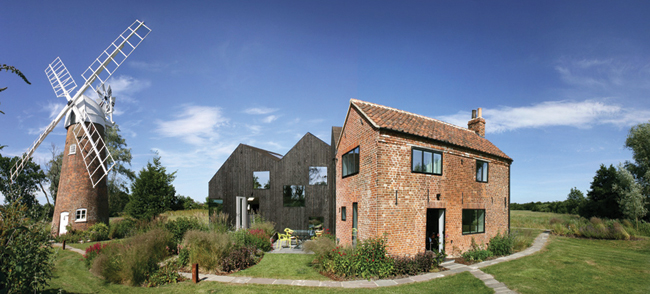Planning permission

We are the local planning authority for all land and properties within our executive area.
Therefore, we are responsible for processing and managing most forms of development in the Broads.
Planning permission is approval to start building or altering a building or piece of land. There are some developments which don't require it and you can find out more about whether you need planning permission. In most cases however you will need to get the relevant planning approval before you can begin.
Specific Broads-related work which generally requires planning permission includes new piling or quay-headings and the creation of new moorings, cuts and fishing platforms. Our design guides on these subjects will give you an idea of what we expect. Extending a garden into different areas of land like grazing marsh or arable field will also require permission. Domestic wind turbines and mooring of residential boats always requires permission.
More information about planning permission can be found in the Handy Guide to Planning.
Specific planning strategies and new developments to be aware of are highlighted below:
Biodiversity Net Gain
Mandatory Biodiversity Net Gain (BNG) was first set out in the Environment Act 2021 and the detailed secondary legislation has been approved by Parliament in November 2023. It aims to reverse the historic decline in biodiversity and leave the natural environment in a better state by making sure that any development subject to planning permission has a measurably positive impact on biodiversity by creating and improving natural habitats.
BNG will be mandatory for major developments from 12 February 2024 and for small sites from 2 April 2024. There are several exemptions for applications where the impact on habitats is low, such as householder applications.
If an application is subject to mandatory BNG, there are a number of specific requirements at both the application and pre-commencement stages.
Please engage early with the authority at a pre-application stage to ensure that your proposal meets the mandatory BNG requirements .
The new mandatory BNG requirements will be in addition to all other existing legal and policy requirements relating to environment, ecology and biodiversity, and will run alongside these rather than replacing them.
More information can be found on our Biodiversity Net Gain webpage.
Nutrient Neutrality
Alongside all other local planning authorities in Norfolk, the Broads Authority has received a letter dated 16 March 2022 from Natural England concerning nutrient pollution in the protected habitats of the Broads Special Area of Conservation and Ramsar site. The letter advised that new development within the catchment of these habitats comprising overnight accommodation has the potential to cause adverse impacts with regard to nutrient pollution. Such development includes, but is not limited to:
- new homes,
- student accommodation,
- care homes,
- tourism attractions,
- tourist accommodation,
- permitted development (which gives rise to new overnight accommodation) under the Town and Country Planning (General Permitted Development) (England) Order 2015, and
- Any development not involving overnight accommodation, but which may have non-sewerage water quality implications.
The Conservation of Species and Habitats Regulations 2017 require local planning authorities to ensure that new development does not cause adverse impacts to the integrity of protected habitats such as the Broads prior to granting planning permission. At present there are no identified mitigation solutions available locally to resolve these impacts.
Whilst the Authority assesses the implications of these matters, it cannot lawfully conclude that development within the catchment of the Broads Special Area of Conservation and Ramsar site will not have an adverse effect. Therefore, until these matters are resolved the Authority will not be able to grant planning permission for developments comprising overnight accommodation within the affected catchments.
More information can be found on our Nutrient Neutrality webpage.
Recreation Impacts Avoidance Mitigation Strategy
The Suffolk Coast Recreation Disturbance Avoidance and Mitigation Strategy (RAMS) and the Norfolk Recreation Avoidance and Mitigation Strategy (RAMS) aim to reduce the impact of increased levels of recreational use on Habitat Sites (also often called European Sites), due to new residential development in Norfolk and the Suffolk Coast area, and to provide a simple, coordinated way for developers to deliver mitigation for their developments.
The RAMS project allows for a strategic approach to mitigating the in-combination effects of development on these designated areas and allows mitigation to be delivered across the project area.
Taking a coordinated approach to mitigation has benefits and efficiencies compared to project by project mitigation packages. The RAMS partnership approach has support from Natural England.
Increased recreation without mitigation would result in the significant features of the sites being degraded, or lost, and these internationally important areas losing their birds and habitat (and therefore their designations), and Norfolk and the Suffolk Coast losing significant important areas for birds, plants and wildlife generally.
More information can be found on our Habitat mitigation webpage.
To apply for planning permission
- Check what supporting documents you need to provide on our validation checklists.
Validation Checklist 1 gives advice on what information and documents will be required by the Broads Authority to accompany any planning application.
Validation Checklist 2 highlights what additional information and documents (i.e. reports and surveys) applicants will need to submit for more complex proposals . - Check what fee will apply on the fees schedule or calculate the appropriate fee using the Planning Portal online calculator
- Apply online through the Planning Portal
- Or download the form to print and post. You'll need to send the original and copies of all forms, plans and supporting information. Find which form you want from this application forms list with links to the printable versions.
If we need anything else after you've applied, we'll be in touch.
Please email us if you require any guidance.

